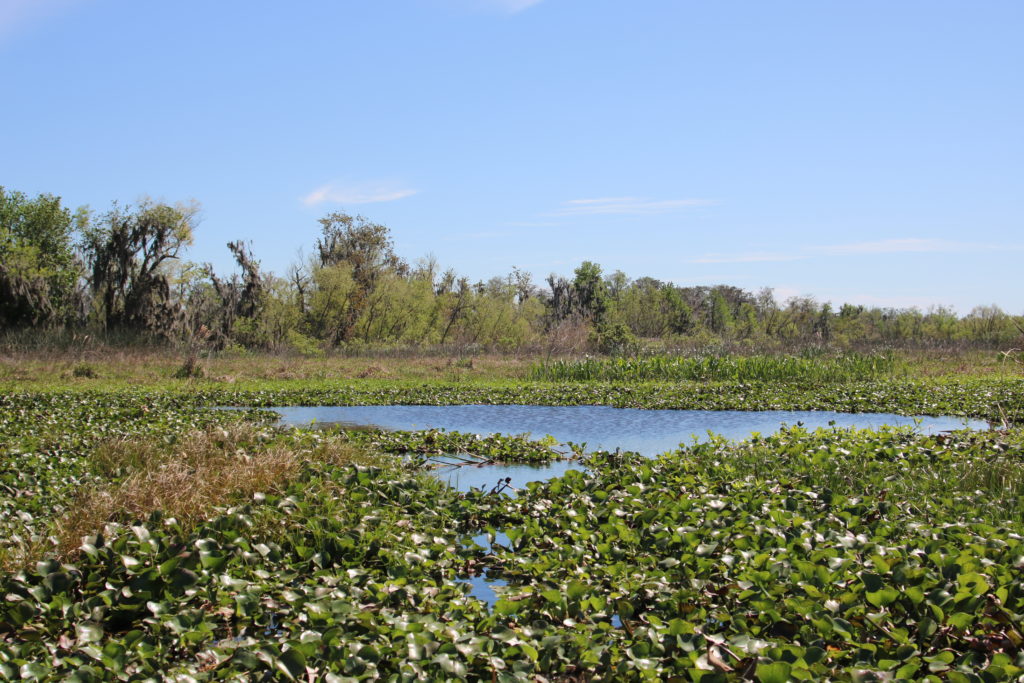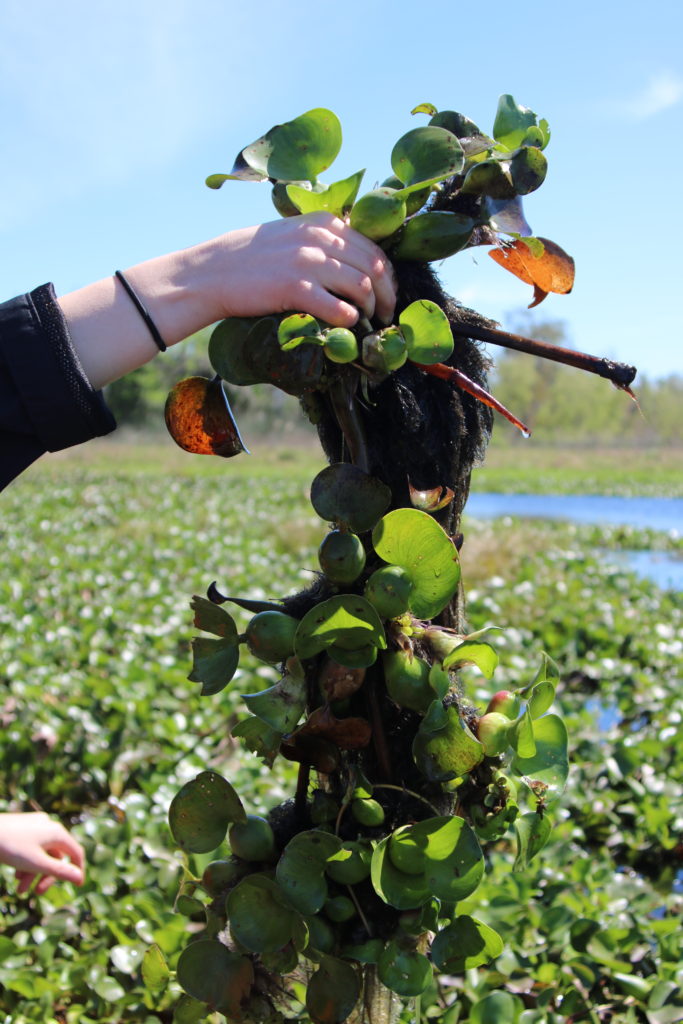The freshwater ecosystems that live beneath the Intercostal waterway of Louisiana and its surrounding areas are losing their native biodiversity, and quickly.
A new dictator has taken over, and it’s name is Water Hyacinth.
Although beautiful, it’s looks are deceiving. The plant’s thick green matt that floats on top of calm water is one of the most destructive invasive species in Louisiana.
What makes Water Hyacinths so powerful is their ability to multiply at an extremely quick rate and it has been known to multiply in under two weeks’ time.

“Wherever the wind blows, wherever the water takes them, they will be there,” says Brian Pember, an employee at the US. Fish and Wildlife services.
Pember says the plant is the native species’ biggest competition. The Water Hyacinth originated from South America near the Amazon basin. Pember thinks that the plant likely ended up in freshwater ecosystems because of local and commercial ponds. The pond’s ecosystem will have these plants in them and when a storm comes, the area will flood and will pass the invasive species into other ecosystems, such as the intercostal waterway or the Mandalay National Wildlife Refuge.
According to the International Union for Conservation of Nature’s issue briefing on Invasive species, the Water Hyacinth’s impacts, like many other invasive species, have effects resembling those of climate change. The IUCN says that invasive species create rising greenhouse gas emissions and reduce the natural ecosystems of natural habitats, agricultural systems and urban areas.
“They are harmful in the sense that they block out all of the sunlight,” says Pember. “When the matt of the plant gets to thick, nothing can grow below its surface due to the lack of light.”
The Water Hyacinth blossoms throughout the summer into the fall months and thrives in warm environments, which is why it thrives in Louisiana. The plant does not survive ecosystems that possess strong winters and cold weather.

This past winter was a bit cooler, according to Pember, which allowed the Hyacinth’s to blossom at a healthy rate on the Louisiana side of the Intercostal.
The intercostal waterway extends down the Mississippi, through Louisiana, reaches the gulf, extends past Florida, and lands all the way up the east coast. It is primarily used for transportation of shipments via Cargo ships Specifically, in Louisiana, a lot of the cargo ships are carrying Gas and Oil according to Pember.
Pember is an employee of the US. Fish and Wildlife services and runs the Mandalay National Wildlife Refuge.